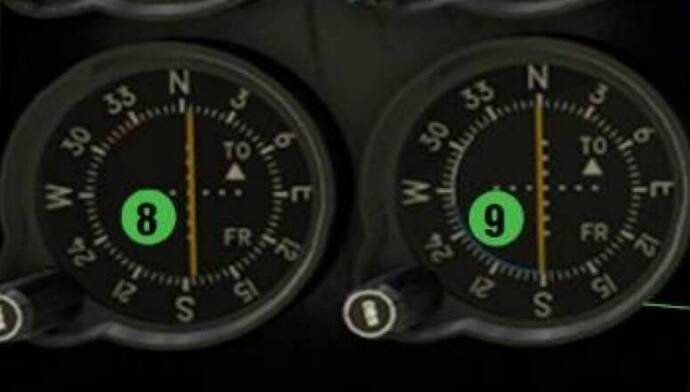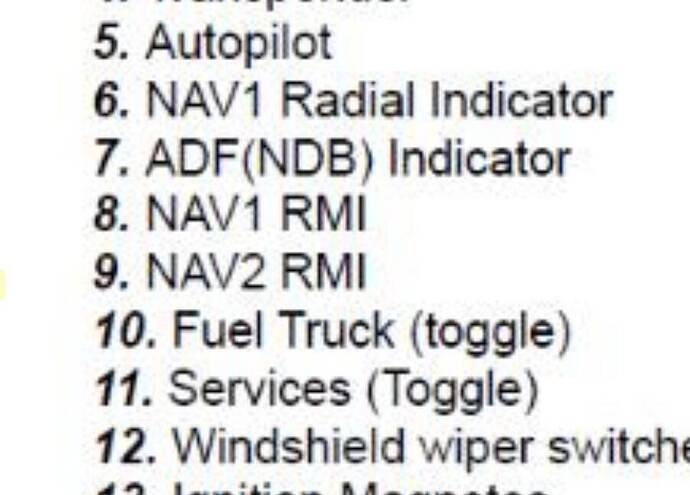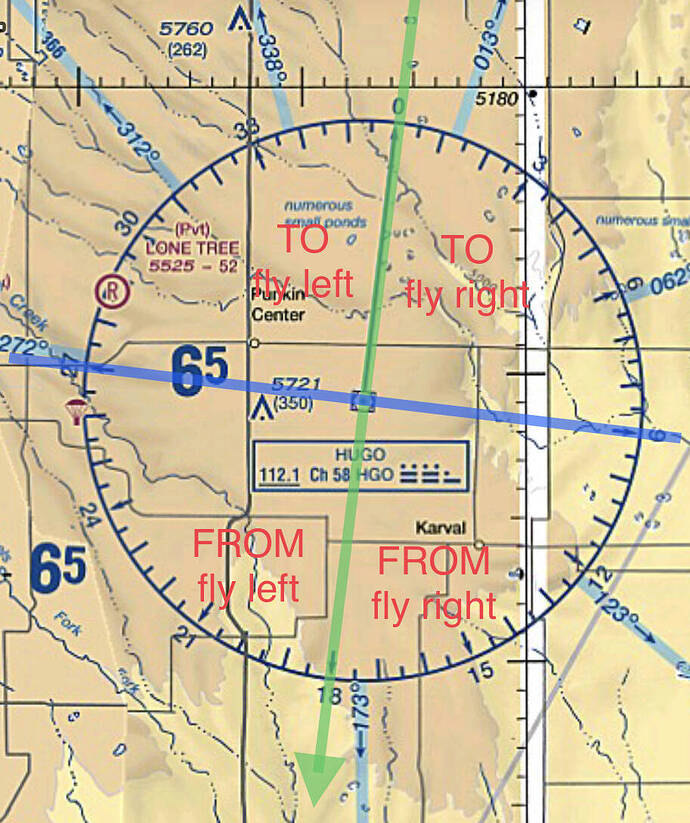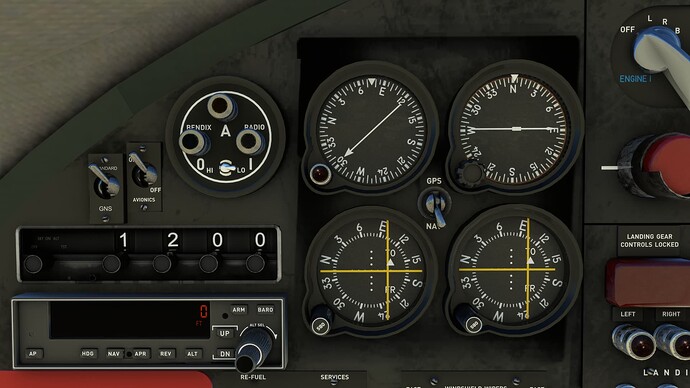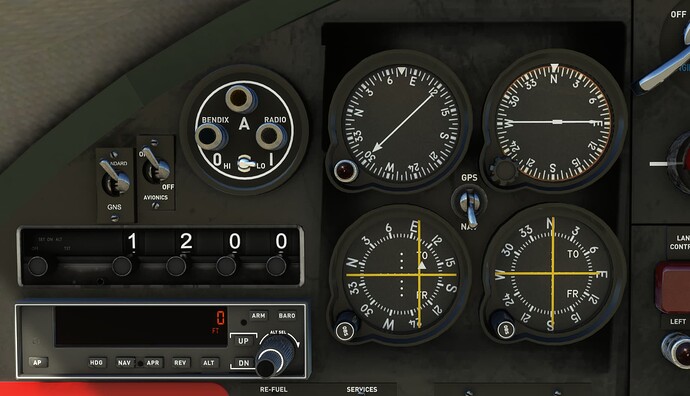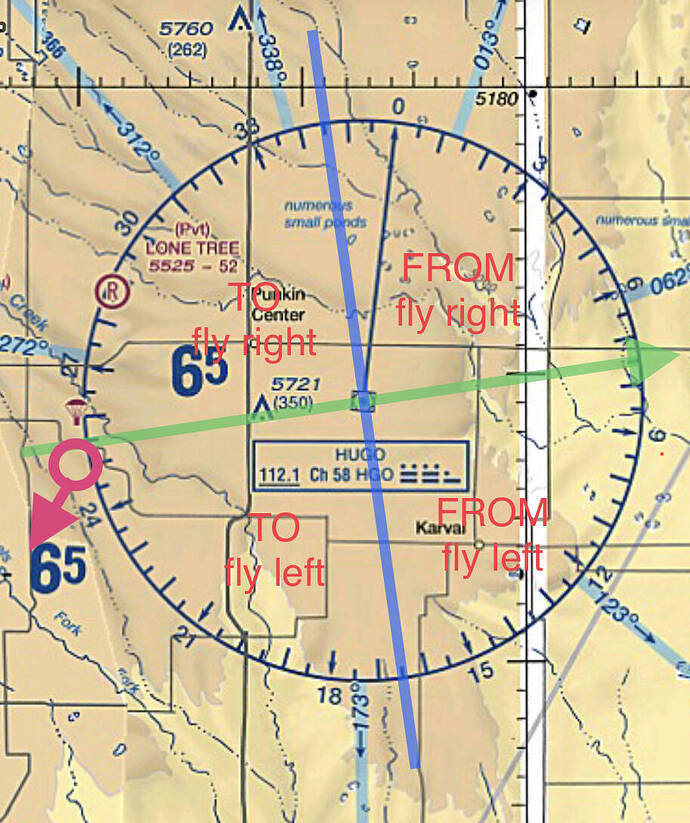Okay, I know it’s the manual and all, but those are VOR gauges, not RMI. For reference, this is an RMI:
With that out of the way, unless there truly is a bug, the most likely culprit is what I partially explained before - you’re reverse-sensing.
Start with the premise that at any single moment, a VOR gauge doesn’t “care” where your nose is pointed. The indication is 100% dependent on the aircraft position relative to the selected course. Heading is irrelevant to that instantaneous indication, but will play into how the indication changes and trends as the aircraft moves.
When you select a course using the omni bearing selector (OBS) knob, you are choosing one of 360 radials emanating from the VOR station. The course deviation indicator (CDI) needle will then indicate whether you are left or right of that selected course. The catch, as I briefly mentioned earlier is you have to pay attention to the TO/FROM flag, which is also dependent on aircraft position and selected course.
Let say you’ve tuned the HGO VOR and have selected the 360 radial. The indications on your VOR gauge will primarily be divided into four quadrants, as shown here:
The CDI will indicate left of course (“fly right”) or right of course (“fly left”) depending on which side of the green line you are on. The TO/FROM flag will indicate based on which side of the blue line you are on (which is perpendicular to the selected course). There’s some ambiguity involved in real-world ops around that blue line, but we’re going to ignore it for the sake of this discussion.
So let’s say we’re to the southwest of the station. Selecting a 360 course clearly puts the plane in the quadrant that gives a “TO, fly RIGHT” indication (needle deflected to the right), meaning we are notionally left of that course. Remember heading has no impact of that indication in that moment - we can be pointed in any direction and we still get the same indication. But here’s where heading does come back into play:
If our plane is in that TO/fly RIGHT quadrant of the 360 course selection (so, again, southwest of the station), and the nose is pointed north, following that fly RIGHT indication will eventually cause the deviation to decrease and the needle will eventually center as we cross the selected course (green line). So we turn to the right, fly northeast and everything is good, the needle eventually centers and we resume a northerly heading and overfly the station.
However, let’s say we’re in the same position, same course selection (360), but instead the nose is pointed south. Remember, the CDI doesn’t care which way the aircraft is heading, only the position matters in a given moment. So even though we’re flying south, it’s still giving us a TO/fly RIGHT indication. So now we turn right, to the southwest, to intercept, but as we continue, the needle indicates further and further to the right, as if the deviation is increasing. What gives? We turned right like it showed, but we’re getting farther from the course?!
What’s happened here is we have selected a radial on the opposite side of the station, which should be done if the intent is to fly TO the station, but we’re flying away, FROM, and the indications are reversed, trending away over time. This is known as reverse-sensing.
If we wanted to properly track that same course over the ground, while heading southbound (away) from the station, the correct thing to do would be to select a course that gives you a FROM indication, 180° in this case, which in that same southwestern quadrant would give you a “fly left” indication. This 180 course selection makes the quadrants look like this:
So if we turn left from a south heading, maybe toward the southeast, the CDI needle will eventually center and we’ve successfully navigated the course!
Note that if we’re in the same southwestern quadrant and we turned the OBS around to a course selection of 180°, we now have a FROM/fly LEFT indication as stated in the last example. If we flip the script again and are flying northbound and intend to intercept the course to the station, with a 180 selection, we will again be reverse-sensing (flying left as prompted will diverge the needle). In this case, we should select the 360° radial and get a proper TO/fly RIGHT indication.
This explanation would work much better with a real-time visual aid, but hopefully that clears it up a bit. There are several nav trainer apps out there that allow you to play with selection, position, and trending based on heading/track. There’s also a great web-based app here: luizmonteiro - Online Simulators - VOR Simulator
Have fun!
![]() Thank you for using the Bug section, using templates provided will greatly help the team reproducing the issue and ease the process of fixing it.
Thank you for using the Bug section, using templates provided will greatly help the team reproducing the issue and ease the process of fixing it.![]() For anyone who wants to contribute on this issue, Click on the button below to use this template:
For anyone who wants to contribute on this issue, Click on the button below to use this template: